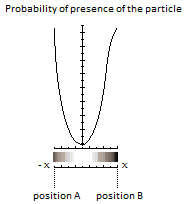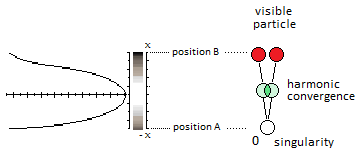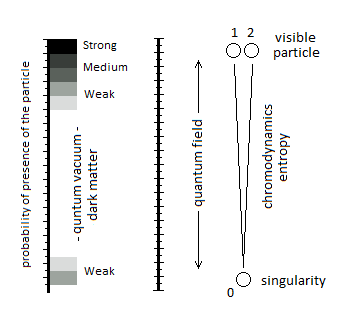The Quark:
The quark represents one of the two edge of the potential well. It is the maximum point, the end of the length of x axis (position B). At its opposite there is the singularity which represents the other end/edge of the potential well, and which is the maximum point of the length of -x axis (position A). These two positions represent the pure correlated mass.
The mass is given by the near immobility of the particle at its turning point in the potential well.

The Gluon:
During an alternation of two quarks for example, generates in the underlying dynamics a convergence of the two quarks at a single point. Between two is created a harmony of superposition and interaction of the particle which represents the gluon.

The Quantum ChromoDynamics:
The quantum chromodynamics is only a field of interaction that interferes with the particle in its convergence of the relative position of the coupling constant.
For the gluon:
The magnitude of the particle, during the assembly of the quarks, generates the fact that the particle converges in its axes in relation to its point of origin; until you reach the plasma level.
Quantum chromodynamics is represented by the splitting of the particle in space-time, and in relation to the point of origin of the singularity. The chromodynamics belongs to the flow of the particle. Below is the diagram of a three-position system, one of whose positions is the point of origin.
